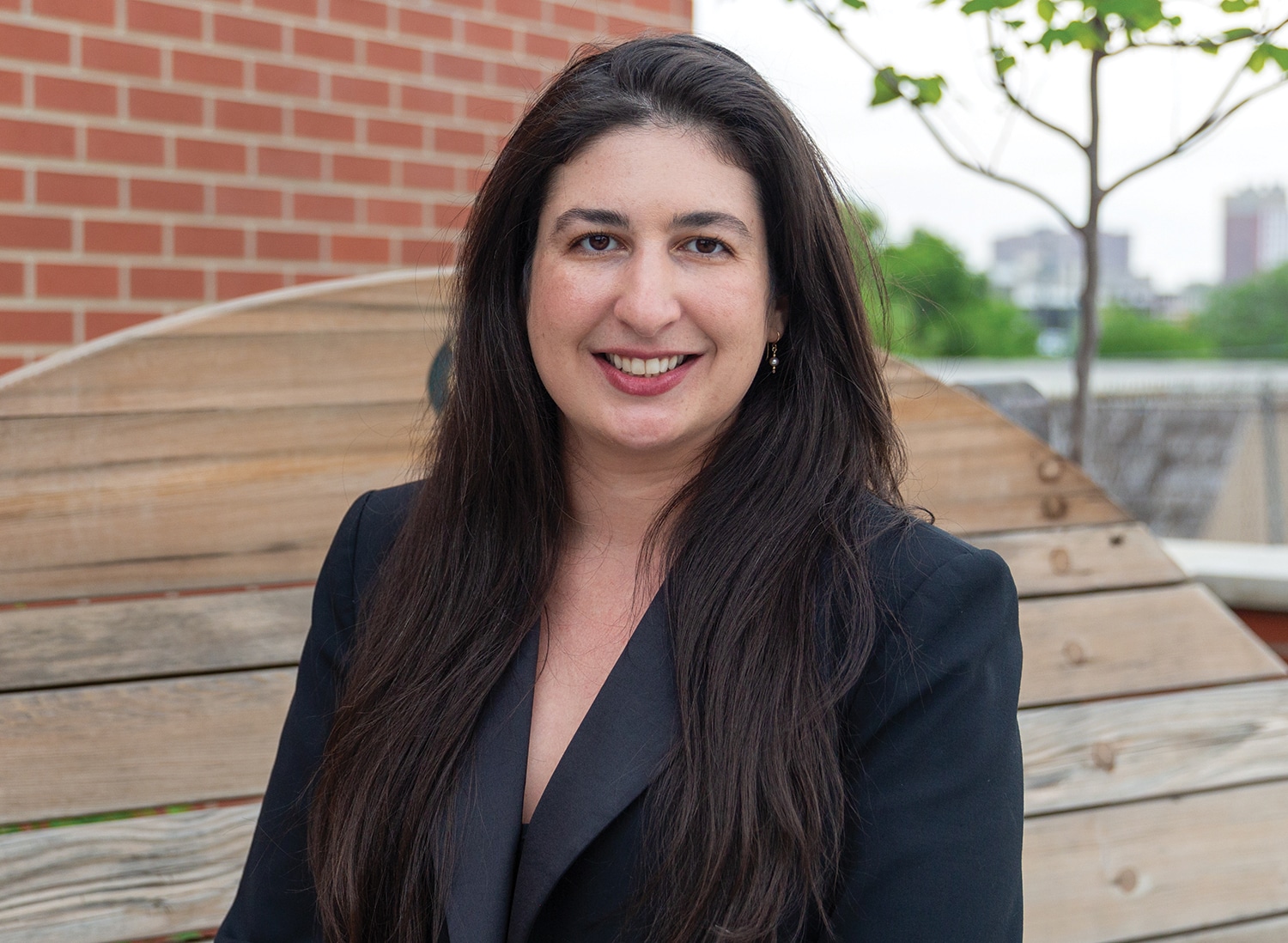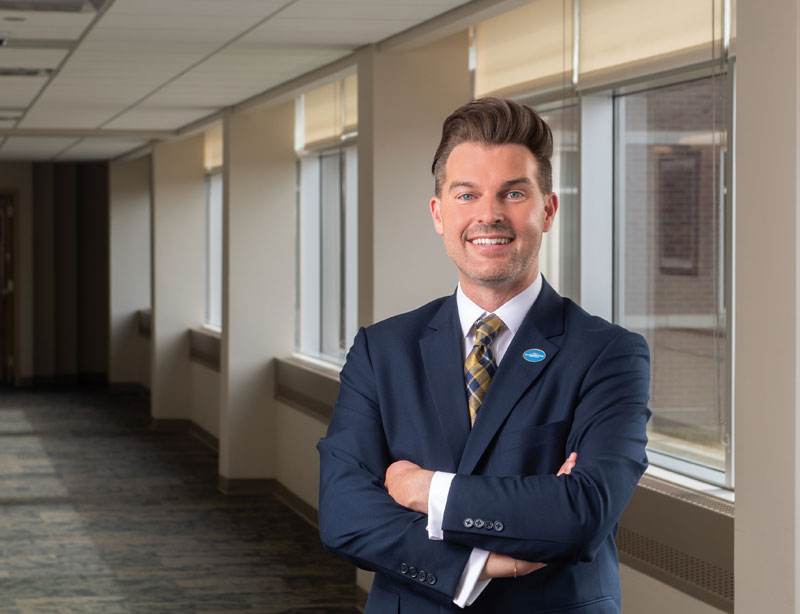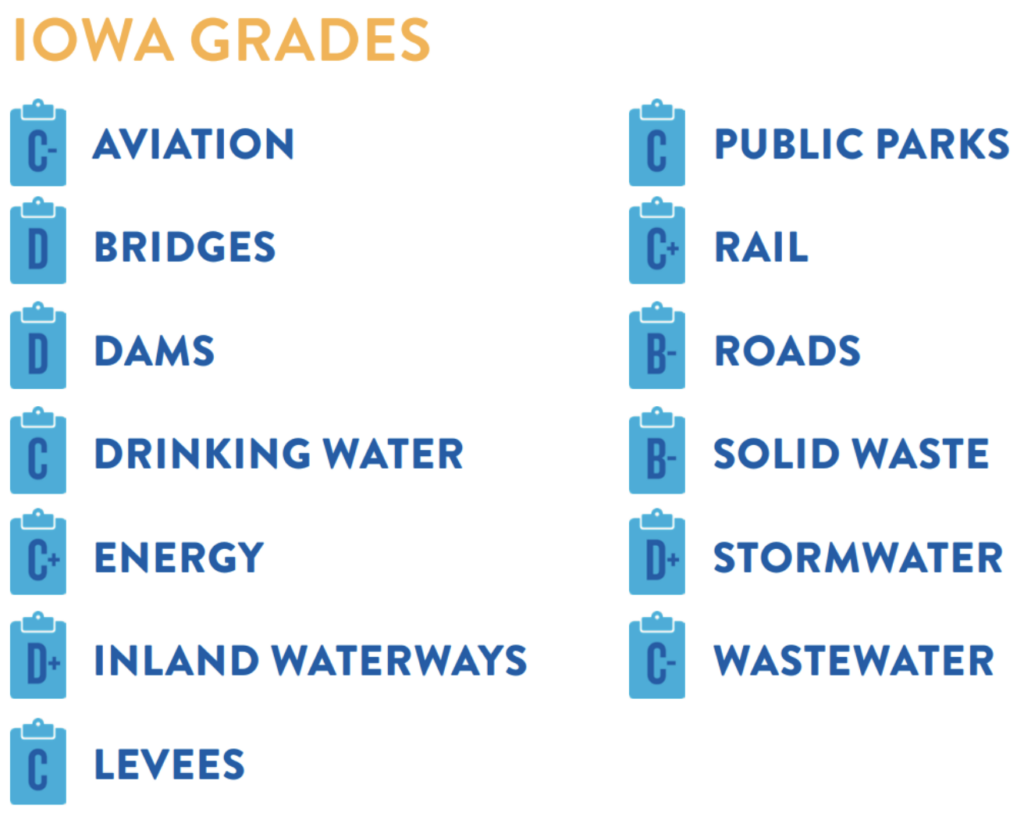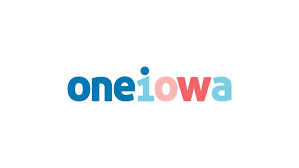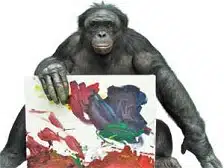A Closer Look: Alexa McCarthy
Executive director, Greater Des Moines Public Art Foundation
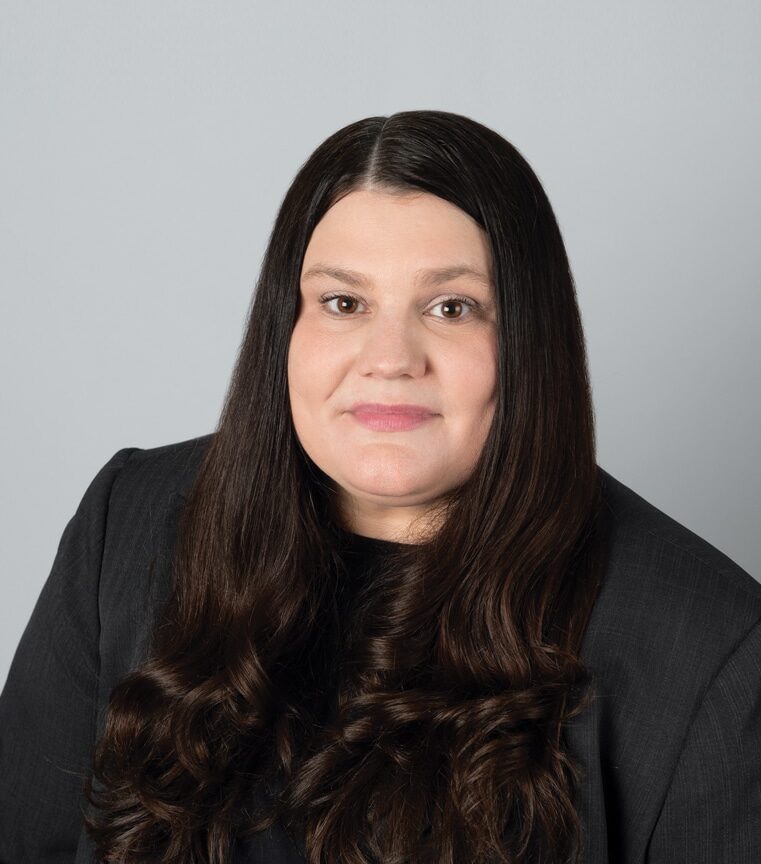
Art shouldn’t be intimidating. But for many people, it is.
Alexa McCarthy, the new executive director of the Greater Des Moines Public Art Foundation, said a goal of hers is to make art accessible to everyone.
People often feel that they “need to know something” when they walk into a big gallery in places like New York.
“That’s one of the things that I love about public art, is there is a little bit of happenstance when you come across an artwork,” McCarthy said.
The Greater Des Moines Public Art Foundation works with the city of Des Moines and other groups to place art in high-traffic places.
“I always tell people when they say to me, ‘I don’t know anything about art’ … you don’t have to,” she said. “See what speaks to you. And that can be on a number of levels; it could be the color, it could be the light, it could be the composition itself, it could simply be where the artwork is placed. You don’t need to have this in-depth knowledge in order to appreciate it.”
McCarthy, who started in September, said one of the foundation’s current prominent projects will shape the look of the new entrance and terminal project at Des Moines International Airport.
She spoke with the Business Record recently about her background and her goals with the Greater Des Moines Public Art Foundation.
During your educational and professional careers, you’ve been in Maine, you’ve been in New York, you’ve been in the U.K. Have you experienced any culture shock here in Iowa?
Iowa’s a place that’s really close to my heart because my dad is from here originally. He was born and raised in Marshalltown. My grandma lived in Des Moines and then West Des Moines. It’s a community that is close to my heart, and it’s one that I really know well and love, so not so much [culture shock]. It’s nice to come back to family friends.
How long have you been on the job? What does a typical day look like for you right now?
I started Sept. 1. A day is usually meeting filled; I like to have a lot of interaction with members of the community. So, potential community partners or existing community partners, having conversations with artists, and meetings with community stakeholders about different projects that we’re working on. Something that’s really important to me is educational outreach. I’ve been working on giving some short presentations. I’ve started at East and Lincoln High School about free art opportunities in the community because Des Moines is really rich in that. We have the Art Center, we have Pappajohn Sculpture Park, we have large-scale public art installations from the foundation, we have a rich portfolio of murals that have a whole range of history. There’s a lot to experience for free in terms of world-class art and public art in this town, which is unique.
If somebody says “public art in Des Moines,” one of the things that comes to my mind is the Claes Oldenburg umbrella. I bring that up because I wonder, how do you and your colleagues measure success – is it when a work becomes iconic like that, or is it when something’s having the effect you want? How do you measure success?
For me, I think making sure that the installation is the right installation for that space has a large role to play in the impact of the installation for the community. And so that’s something that is always very important to me. You see that in terms of people interacting with those pieces of art and also when you see people coming to town and seeking out those pieces of art specifically, or even publications or exhibitions of that artist’s work, wanting to incorporate that installation into that, so you start to see it being published. Artists like Claes Oldenburg, Kerry James Marshall, these are hugely resonant, influential artists on an international scale in the public art realm. So making sure that the art works, and to speak to these artists’ intentions, but also, as I mentioned, really fit within the community; there are many factors that go into it: location, artist’s concept. How those all come together is usually measured in community interest and how that work of art becomes synonymous with a place. So you start to see that a lot. Then you realize, “OK then, we’ve done a good job with that exhibition, with that installation.”
What are you looking forward to most, whether that be a specific installation or a goal, in 2024 and 2025?
We’re working with the airport to realize the public art installations for the airport. As we move later into 2024 and into 2025, we’ll begin to get a sense of what those installations will look like, and begin to work with the artists to realize them, and they’ll be in place when the terminal opens in 2026. So that’s very exciting. And then also, continuing to work with community partners to realize installations throughout the city and furthering our educational engagements.
What are your favorite elements so far of the local art scene?
I think there is a vibrant community of artists who are engaged in a range of different types of art. We’ve got sculpture, we’ve got painting, we’ve got photography, and really a lot of great different opportunities in the community to connect through murals, through exhibitions at local galleries, also through art center exhibitions, to kind of champion that local work. I think there is a lot of interest in terms of organizations, both the Public Art Foundation and Operation Downtown, which is one of our partners, to infuse the city with art that’s openly accessible and exciting and vibrant. A lot of that art, we’re lucky that it actually comes from members of the community.
I’m curious how the vision-setting process works in your role. Are you able to be proactive? Or is your job more about reacting to opportunities that present themselves? Or is it a combination?
It’s a combination of both. Most of our installations come from public-private collaboration. Most of the time, our installations are on public property. We have the opportunity to be largely proactive in terms of saying, here are the artists, international artists, that work in the public art space that we might want to work with; here are the different locations in the city, working with the city and other departments within its purview to determine what might be appropriate spots for these installations. But then also, sometimes people come to us and say, “You know, we’d really like to see X here,” and so we would work with them to do that.
Iowa’s birth rate is declining. We have an aging population, and there’s a lot of interest in developing a workforce and having people choose to move to Iowa. What role does public art play in that, as far as recruiting that workforce?
I think being able to demonstrate the strong place-making efforts that the city has made and the fact that there are really unusual resources in terms of art that you can see, as I mentioned, for free in this town. The city is very committed; if you look at the Oakridge Neighborhood and Jordan Weber/SWISH project, making sure that the community is interested in seeing those projects come to life, and we work very closely with the individuals in the community to create installations that are meaningful to them. That’s something that is continually important to me, and I think that Des Moines has done a very good job of doing that.
Tell me about fundraising. How much of your time do you spend in that space? And is there a lot of vigilance required – and persuading local governments – to maintain their commitments to public art investment?
A large amount of time is spent fundraising for our projects, and the fundraising model was largely project-based. Now we’re looking at potentially raising funds for the organization itself in order to sustain and build and develop programming that coincides with these installations and is ongoing, long term, so that we can continue to realize both large and small projects on a regular basis. That’s very important and kind of a bit of a shift that we’re seeing. And we are supported largely by the city of Des Moines. And the city of Des Moines has been, in my time here, hugely collaborative and supportive of the Public Art Foundation’s installations and endeavors, and that’s been the case, as far as I know, through all of the exhibitions. So we’re very grateful because the city recognizes the need for public art, and they support the foundation in order to realize these initiatives and work with us.
I wanted to ask you about your research and to put it into context for an everyday person like me who enjoys art but isn’t immersed in it. What is your passion there?
My research specifically focuses on a material called blue paper. That’s paper that is made to be blue; there are different types, that’s the type that I focus on. So you just call it inherently blue paper, paper that’s made to be blue. I look at drawings that are made on this material in the 16th and 17th centuries. That’s particularly in Italy and the Netherlands. Those are my areas of focus. If we think about why I’m interested in this, what is a particular fascination for me is that blue paper was initially made to be a wrapping material. And it then was taken up as an artist’s material and a drawing material, specifically, and if you think about the mid tone of the paper, it’s blue. You can use a light color and a dark color and you can model a two-dimensional figure very easily. The questions surrounding it were, “Is it expensive or cheaper?” and “Why?” That was what got me interested. For me, it’s how materials begin to resonate with a particular place and time and how artists begin to use materials as kind of hallmarks or legacies of their work. …
It is a field that is particularly interesting to a small group of collectors and scholars. For me, it’s wonderful that I have the opportunity to continue my scholarship and my research and writing alongside my work in this role, because in this role, what I’m able to do is engage with community and work with artists who are living and creating and asking and answering some of these same questions that I deal with in my research, but that I certainly couldn’t have a conversation with an artist about. So it’s neat to be able to also work with a range of media. One of my particular loves is working very closely with conservators, and that’s something that I’m able to continue in this job and working with assessing the collection and making sure that we are following proper protocols and taking care of our artworks.
What advice would you have for the average art consumer who would love to know more about art and truly enjoy it? Do you have any podcasts or book recommendations, or what’s a good way to slowly dip your toe in as someone who enjoys art and wants to know more?
My encouragement to people is to stop putting pressure on themselves to take a particular view or have a particular line of thought when you’re looking at an artwork. … I always say, get as well-rounded of a picture as you can. That can be from a very basic book about that artist, and one sentence might interest you to take up and start looking into another area. Go into it without pretense or expectations of yourself.
I also know that Liz Lidgett has a podcast where she talks about masterpieces of art. She has a really lovely and accessible way of introducing art, and sharing her love of art with people. Oddly, also, social media is a really great place to learn about artworks, and when I say that, I suggest following museums and galleries because they often share videos about highlights of their collection that can really get you thinking about artists and periods as well.
Is there anything I didn’t ask you that I should have, that you think would be important for the Central Iowa community to know, whether it’s about you, or whether it’s about your job or your passions?
Sometimes people ask me what drew me to this position. For me, it’s the fact that it’s a community that’s incredibly vibrant in terms of the people who comprise it. They’re passionate about Des Moines, and also the vibrant artist community as well. And I think it’s a place where you can really still work to make an impact. And there is so much happening in terms of development and opportunities for art. And so for me, as I have dealt with, in the past, I’ve studied in Scotland at the University of St. Andrews, before that, I was living and working in New York City in many different roles. … People often think that there’s one avenue in art, it’s to be either an artist, or to be a teacher or a curator. So yes, but there are so many things involved. There are also so many ways for people who have a variety of skills to become involved in the arts, making it known to people at a younger age and a variety of backgrounds that there are possibilities and how to access them. That’s very important to me. And I think that’s something that I’m able to do in this job, where I maybe wasn’t able to do that in others.
What do you do away from work?
I have two very precious dogs; one is 10 and one is 3. I spend as much time with them as I can when I’m not working. My husband and I have been together 15 years and married 10; we spend a lot of time together and with the dogs and exploring Iowa. That’s been fun, doing little road trips; we like going to Saylorville Lake and walking the dogs on the different trails. I still, as you said, I really love art. My research background is focused on early modern paper and drawings. So in my non-work time, I still am working on research and writing and furthering publications. And speaking on that topic.
At a glance
Age: 35
Hometown: I grew up in Florida, California and Maine, and consider Yarmouth, Maine, to be home.
Family: My husband, Marcus, two dogs named Speedy and Alfie, and our cat, Lady
Education: B.A. in art history from Bowdoin College, Brunswick, Maine; M.A. in art history from the Courtauld Institute of Art, London; Ph.D. in art history from the University of St. Andrews, St. Andrews, Scotland
Activities: Research, writing and time with my family

Nicole Grundmeier
Nicole Grundmeier is a staff writer and copy editor at Business Record. She writes for Fearless and covers arts and culture.
